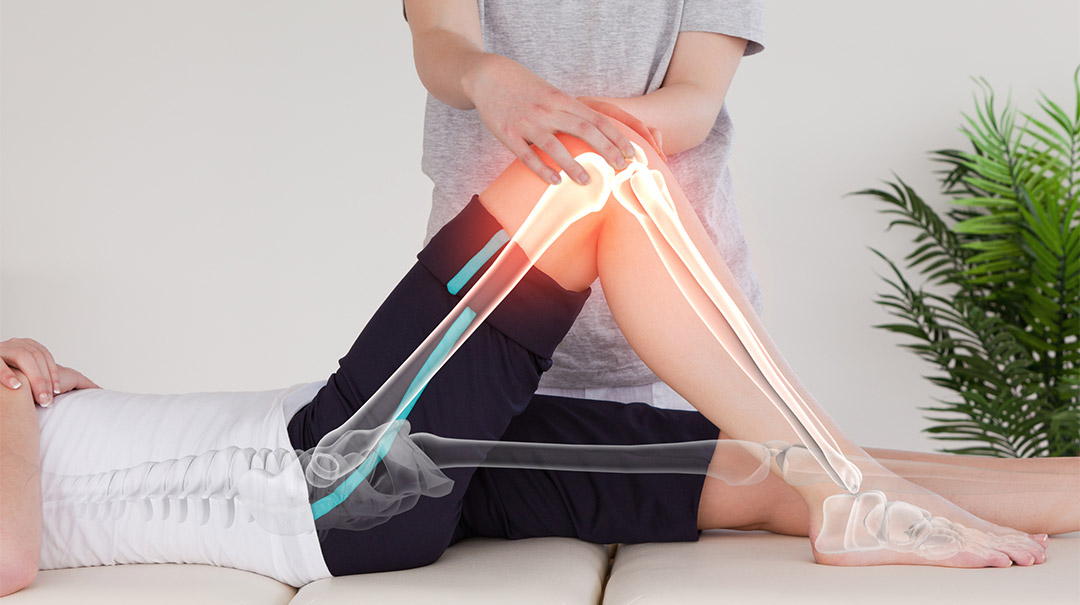How does diagnostic arthroscopy work?
A diagnostic arthroscopy is minimally invasive. There’s no general anesthesia, and the procedure takes about 10 minutes. Most patients can leave the office about five minutes after that.
First, we apply a local anesthetic so you don’t feel pain, though you might feel mild discomfort that patients have described as feeling like a bee sting. Then, without an incision, we insert a tiny scope into your knee, hip or shoulder joint. The scope is a thin, flexible tube with a camera attached that shows images from inside your joint on a screen in the office.
Prior to us using in-office diagnostic arthroscopy after MRI, a traditional diagnostic scope under general anesthesia sometimes was needed to find out what was wrong with the joint. In other words, some patients had to spend most of a day in the hospital, go under anesthesia and wait in recovery just to find out whether they needed surgery. Then they’d have to come back again for shoulder, hip or knee surgery.
A supreme benefit of this diagnostic tool is this that we can find out right away if injury exists. This helps for better understanding and planning. And in situations where we don’t find anything, diagnostic surgeries can be skipped, avoiding unnecessary surgeries and exposures to anesthesia.
Is it weird to see inside your own joint?
While I wouldn’t expect most people to get excited about the idea of seeing the ingredients of their own joints, people don’t get grossed out by it, either. Most of my patients have been fascinated by what the inside of their joint looks like. Really seeing what’s going on can help them understand the severity of their injury, and it also can help them get proof that some injuries aren’t as bad as they thought. I find that information is useful because it reassures them that they can successfully proceed without surgery when an MRI or X-ray doesn’t give a clear enough picture.
When we find during in-office arthroscopy that surgery is necessary, we can use the tool to make our surgical recommendations much more confidently. For example, we had a patient with a complex knee condition that, before, would have required two surgical procedures: a preliminary procedure to fix the immediate concern and potentially a full knee replacement to get to the root of the problem later in life. Using in-office arthroscopy, I was able to recommend an immediate partial knee replacement instead, avoiding the need for separate surgeries. This made the patient—and me—much more comfortable with the recommendation. Rather than basing our advice solely off of what has worked with similar patients in the past, we were able to tailor this patient’s procedure to their unique anatomical needs.
Will in-office arthroscopy replace traditional knee scoping?
In-office diagnostic arthroscopy is approved for use in combination with standard MRI or X-ray imaging and a physical exam. Its role is constantly changing and increasing. The tool helps me educate patients, which is why I find it very useful to show patients why I think nonsurgical therapy would be successful. It also can help me show patients in real life what’s torturing them, and that can help them understand why surgery might help.
Some orthopaedic surgeons might question the worth of in-office arthroscopy if it points to problems that shouldn’t be corrected with surgery. But we understand why it’s worthwhile. In our practice, we recommend surgery only if physical therapy or other interventions alone won’t work. In fact, I spend more time in appointments explaining why a patient doesn’t need surgery than explaining procedures!
One of the most important parts of my role is education and helping people become more informed about their bodies. When you can visualize what’s going on inside your joint and understand what you need to do to heal, it can become easier to stick to your treatment plan.

